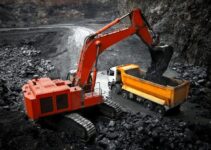Noise pollution is defined as unwanted sounds that disrupt normal sound in the environment. Noise pollution often emanates from railroads, road traffic, aircraft, loud music, construction sites, and industrial activities. Nevertheless, the definition of noise is subjective as it varies from one individual to another. In the majority of cases, individual response to noise is influenced by loudness, time pattern, and frequency.
Other factors include the nature of the activity that produces the noise and the level of background sound before the introduction of another louder sound frequency. Noise is the only form of pollution that is ever-present but rarely noticed despite its adverse effects. It can lead to loss of memory, deafness or in some cases psychiatric disorders. Sensitivity to different sound frequencies is measured using the A-weighted decibel scale (dBA).
Noise Pollution is a relative thing. In a city, it’s a jet plane taking off. In a monastery, it’s a pen that scratches.
~ Robert Orben
The acceptable amount of sound level is about 60 to 65 dBs, which equals to that of a normal conversation. Sound levels higher than 85 dBs are harmful depending on the duration of exposure and if one has hearing protection or not. Noise above 140 dBA can cause permanent hearing loss. Here are the various sources of noise pollution and tips for prevention.
Various Sources of Noise Pollution
The sources of noise pollution are classified into two broad categories: Internal and external sources of noise pollution.
1. External sources of pollution
These are the major sources of noise pollution in the environment. They are sources that are extremely difficult to control. They include.
- Industrial sources. The industrialization has resulted in the rise of noise pollution. The industries include textile mills, engineering plants, printing presses, and metal industries. Most industries use heavy machines capable of producing very high levels of noise. They have equipment such as compressors, exhaust fans, grinding mills, and generators which increase the overall noise levels in the environment. Workers in these environments are in great health risks in case they do not take proper measures like wearing earplugs to minimize the effect of the noise.
- Vehicles for transportation. The automobile revolution has turned out to be a big source of environmental noise in urban regions. In the modern age, there is an increase in traffic due to the growth in the number of vehicles such as buses, trains, and trucks. People caught in traffic jams are also often impatient and will continuously hoot their horns in an attempt to alert the driver in front of them to move. These acts produce unbearable noise to the people living in the neighboring areas, the commuters or passersby, and the environment as a whole. Airplanes also increase the problem of noise in major urban cities. Most airports are located near residential areas and for this reason, the jet-planes taking off and landing in such areas normally produce high sound levels.
- Poor urban planning. Developing nations habitually lack proper urban planning that leads to congested housing, small spaces, small industry proliferation, and lack of enough parking areas. Poor urban planning thus contributes to environmental noise through fights or social and basic amenities, noise from small manufacturing industries, wrangles over parking space, family quarrels from the neighboring houses, and noise from playing children.
- Public address systems. Public functions such as rallies, strikes, elections, religious and secular events use addressing systems that are very loud. The organizers of such events normally flout the rules set against public noise pollution by the state. Loud noise from public address systems and music systems during social events such as parties and religious crusades are another source of noise pollution. Open markets also often produce high levels of noise pollution due to the activities of buying and selling, and the use of loudspeakers and megaphones in advertising merchandise or services.
- Agriculture machines. Noise level of as high as 90 dB to 98 dB has been recorded in some farms using heavy types of machinery and equipment. These equipment include thrashers, tube wells, tractors, drillers, powered tillers, and harvesters.
- Military equipment. Artillery tanks, rocket launching, military airplanes drills, explosions, and shooting practice are serious noise polluters. Deafening impacts are produced by the sounds of jet engines and in extreme cases, they cause the shattering of window panes and cracking of old dilapidates buildings located near their take-off and landing areas or when they fly past such structures.
2. Indoor sources of noise
They are noises associated with human activities within a household or building. They also occur due to operations of building services and office services.
- Inside building services. Construction works, workshops and automobile repairs cause noise pollution. The equipment used in such jobs produces a lot of noise that causes nuisance and may hamper hearing ability.
- Household activities. These are activities such as the loud banging of doors, noises from playing children, furniture movement, crying infants, loud arguments. Many households also own entertainment equipment such as Hi-Fi Systems, Television sets, and loudspeakers that may further contribute to the overall noise emanating from indoor household activities. Household equipment like pressure cookers, vacuum cleaners, washing machines, sewing machines, mix-grinders, desert coolers, exhaust fans, and air-conditioners equally produce a lot of noise.
- Office equipment. In offices, there are printers, photocopiers, and typewriters among other equipment that contribute to noise pollution in the working places and its environs.
Tips for Prevention of Noise Pollution
1. Standard laws by different organizations
Transport sector noise control, proper urban planning and use of zoning codes, roadway noise control, noise-reducing architecture designs, and aircraft noise reduction are some of the noise mitigation measures that can be employed to curb noise pollution. To implement them, there are various guidelines or rather standard recommendations of allowed noise levels including:
- Occupational Safety and Health policies. These policies impose administrative and engineering controls in the workplace in cases where the workers are exposed to levels of noise which are above 90-dBA for a period of eight-hour time-weighted averages (TWA). It also recommends that Impulse and impact noise control measures to be put in place where the noise is past 140 dB. It has been applied in various sectors around the world including manufacturing industries, office spaces, construction sites, railroads, and airports. The measures include controlling impact and impulse of noise.
- Other organizations. They include Mine, Safety, and Health Organizations. Different countries have their own policies and regulations on noise pollution that are in line with international noise pollution policies in the mining, processing, and power production plants.
2. Tips to control noise pollution
Some of the tips that can assist in controlling noise pollution include
- Use of earplugs. One of the cost-effective tips for reducing noise pollution is wearing earplugs. They can be worn in working places and while sleeping to reduce the amount of noise from the surrounding environment. They have health benefits such as healthy sleeping habits and prevent damage to the eardrum.
- Soundproofing. Industrial plants that produce a lot of noise from their machinery can use soundproof materials to reduce high sound frequencies. At home, one can install soundproofing materials that block the noise and associated vibrations. Double-pane windows, for example, can be an impressive method for preventing noise pollution.
- Closing the windows. To prevent unwanted noise from entering into the house and buildings, one can simply close the windows and open them when it is quite.
- Jarring horns. To reduce the noise that is associated with continuous hoots in traffic, vehicles can install horns that have jarring sounds. In cases where the exhaust pipes are damaged, they should be repaired and noisy trucks banned.
- Law enforcement. The state and local governments should have proper laws that prevent noise pollution near residential areas. They can give authority to community law enforcers who will have the mandate of checking noise polluters. An example is whereby laws are enforced such that industries or noise-producing businesses are set up and operated away from schools, colleges, hospitals, and residential areas.
- Noise-canceling headphones. They can be used by workers to reduce noise pollution in industrial and construction workers. They filter any unwanted noise and prevent it from reaching the ears.
- Use of barriers or go green by planting trees. A simple way of reducing the vibrations and strong sound waves is through the use of barriers such as fences and planting trees around the house. These barriers would absorb the waves and reduce environmental noise significantly.
- Lubrication and better maintenance of machines. When the moving parts of machines and engines are well maintained and lubricated, it not only improves efficiency but also aids in reducing noise. The reason is that lubrication and proper maintenance reduces friction between moving parts.
- The use of creativity in house and office layout. Being innovative in the placement of equipment can significantly help in reducing noise pollution. Noisy house appliances and office equipment can be placed at the far ends of the house or office, therefore, reducing the levels of noise that reaches resting or working areas.
References:






